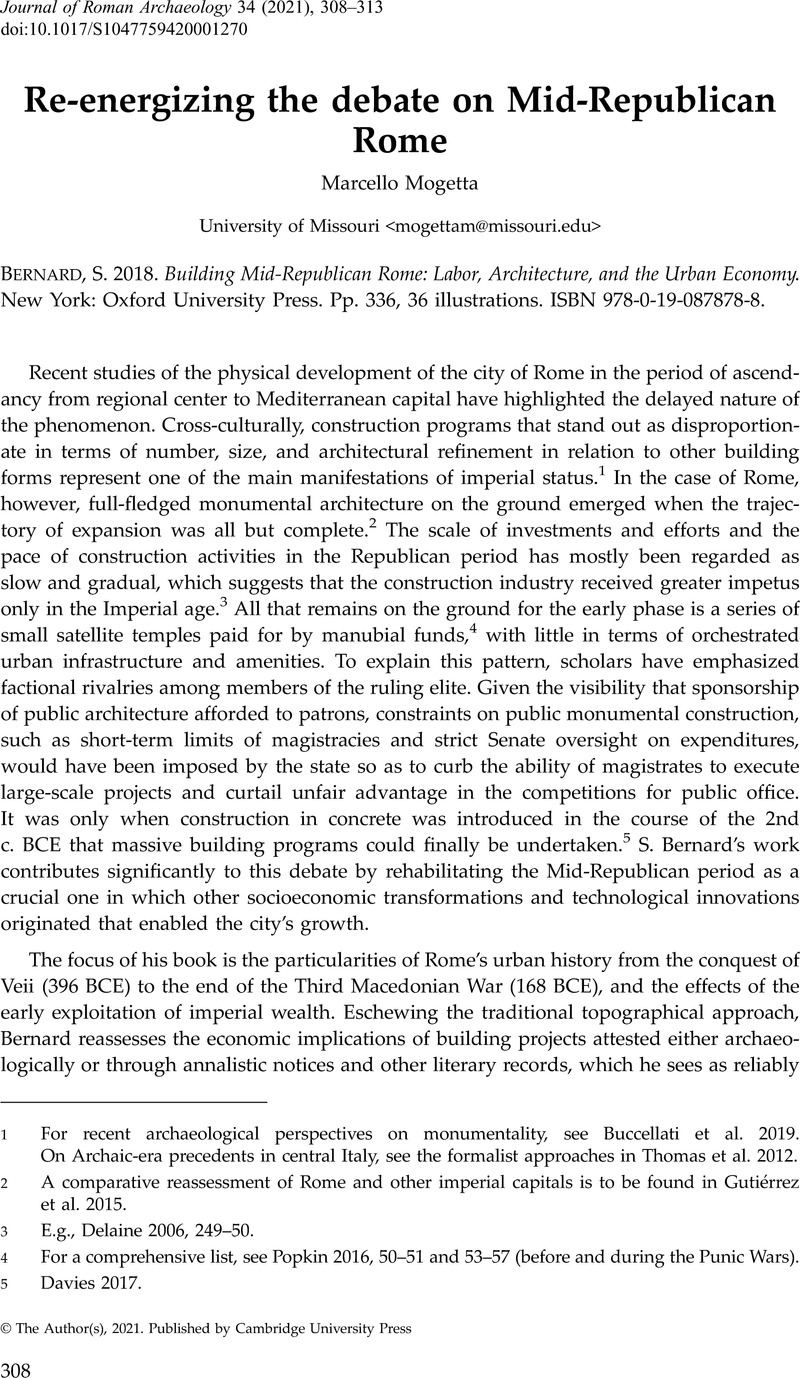Maschek, D.
2016. “
Quantifying monumentality in a time of crisis: Building materials, labour force and building costs in late Republican central Italy.” In
Arqueología de la construcción V: Man-Made Materials, Engineering and Infrastructure. Proceedings of the 5th International Workshop on the Archaeology of Roman Construction, Oxford, April 11–12, 2015, ed.
DeLaine, J.,
Camporeale, S., and
Pizzo, A.,
317–29. Anejos ArchEspArq 77.
Madrid:
Consejo Superior de Investigaciones Científicas.
Google Scholar 